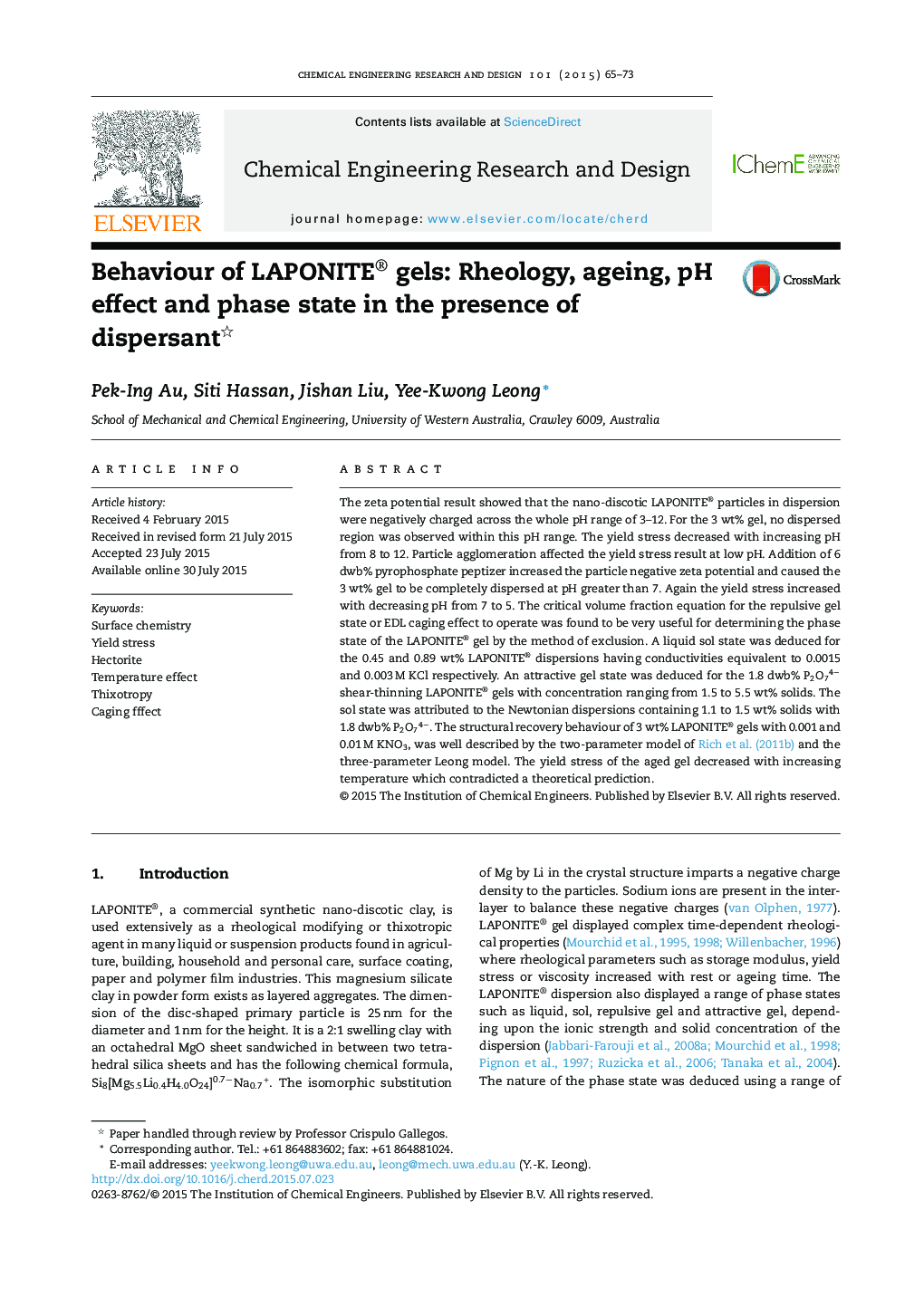| Article ID | Journal | Published Year | Pages | File Type |
|---|---|---|---|---|
| 621199 | Chemical Engineering Research and Design | 2015 | 9 Pages |
•Phase state of LAPONITE® dispersion with pyrophosphate peptizer determined.•Zeta potential–yield stress correlation of this dispersion with/without peptizer determined.•Temperature decreased the yield stress of aged LAPONITE® gel.•Ageing behaviour of gel close to the boundary of “floc” state (0.01 M KNO3) determined.•The models of Rich et al. and Leong described the ageing behaviour well.
The zeta potential result showed that the nano-discotic LAPONITE® particles in dispersion were negatively charged across the whole pH range of 3–12. For the 3 wt% gel, no dispersed region was observed within this pH range. The yield stress decreased with increasing pH from 8 to 12. Particle agglomeration affected the yield stress result at low pH. Addition of 6 dwb% pyrophosphate peptizer increased the particle negative zeta potential and caused the 3 wt% gel to be completely dispersed at pH greater than 7. Again the yield stress increased with decreasing pH from 7 to 5. The critical volume fraction equation for the repulsive gel state or EDL caging effect to operate was found to be very useful for determining the phase state of the LAPONITE® gel by the method of exclusion. A liquid sol state was deduced for the 0.45 and 0.89 wt% LAPONITE® dispersions having conductivities equivalent to 0.0015 and 0.003 M KCl respectively. An attractive gel state was deduced for the 1.8 dwb% P2O74− shear-thinning LAPONITE® gels with concentration ranging from 1.5 to 5.5 wt% solids. The sol state was attributed to the Newtonian dispersions containing 1.1 to 1.5 wt% solids with 1.8 dwb% P2O74−. The structural recovery behaviour of 3 wt% LAPONITE® gels with 0.001 and 0.01 M KNO3, was well described by the two-parameter model of Rich et al. (2011b) and the three-parameter Leong model. The yield stress of the aged gel decreased with increasing temperature which contradicted a theoretical prediction.
